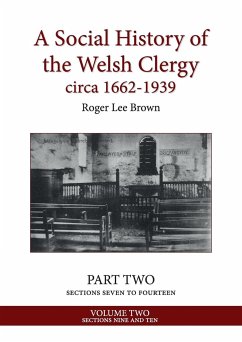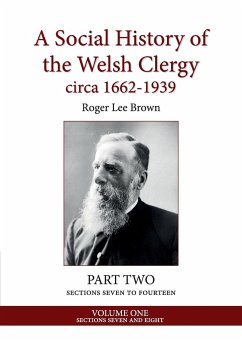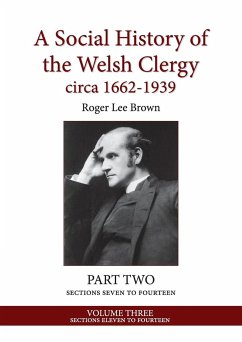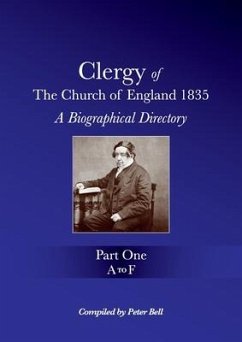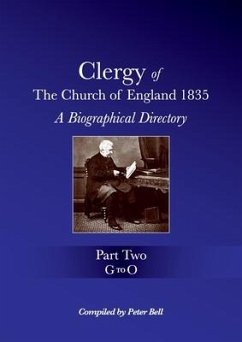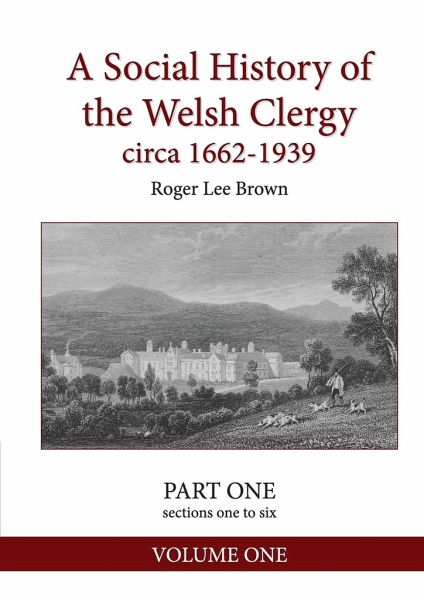
A Social History of the Welsh Clergy circa 1662-1939
PART ONE sections one to six. VOLUME ONE
Versandkostenfrei!
Versandfertig in 1-2 Wochen
22,99 €
inkl. MwSt.

PAYBACK Punkte
11 °P sammeln!
Part one of A SOCIAL HISTORY OF THE WELSH CLERGY contains two sections, namely "The Route to Ordination" and "The Inferior Clergy". The first section describes the dilemma faced by the four Welsh dioceses of the Church of England, then part of the Province of Canterbury. The Church was impoverished, the native Welsh speakers (required for a Welsh-speaking Church) unable to afford a university education, and by the 19th century Nonconformity had made many inroads into the religious life of the nation. A substantial number of those ordained came from Nonconformist backgrounds, many from the coun...
Part one of A SOCIAL HISTORY OF THE WELSH CLERGY contains two sections, namely "The Route to Ordination" and "The Inferior Clergy". The first section describes the dilemma faced by the four Welsh dioceses of the Church of England, then part of the Province of Canterbury. The Church was impoverished, the native Welsh speakers (required for a Welsh-speaking Church) unable to afford a university education, and by the 19th century Nonconformity had made many inroads into the religious life of the nation. A substantial number of those ordained came from Nonconformist backgrounds, many from the counties of Cardiganshire and Carmarthenshire, and were educated in the divinity departments of grammar schools, enabling them to sit the bishops' examinations for ordination. Eventually St David's College, Lampeter, was opened to replace these schools and to provide a systematic training, though it was not without its critics. A number of other men were trained elsewhere in theological colleges and at the historic universities. The wider Church eventually imposed more professional standards of training. The last chapter describes the bishops' examinations, often held during the week before the actual ordination, so that some men were plucked at the last minute, and the generally carefree way in which ordinations were held. The second section, on the inferior clergy or curates, distinguishes between the perpetual curate, who served a parish whose main income went to a lay impropriator, and the stipendiary curate, who served for an absentee incumbent. Many of these men served as pluralists, and were poverty-stricken. By the early 19th century legislation brought about reform and ended these abuses, while a new breed of curate was becoming common, namely the assistant curate serving under a resident incumbent. The difficulties of their position, such as insecurity of tenure, are documented with numerous examples.



